The Tile museum Lisbon is known locally as the Museu Nacional do Azulejo. It is a little-known gem in the heart of Lisbon. These beautiful tiles are an important part of Lisbon’s architectural history – you have probably seen them on train station platforms if you’ve travelled around the country. The tile museum in Lisbon is actually set in an old convent (Madre de Deus Convent) and so the building itself along with the gardens are as beautiful as the tole collections themselves.
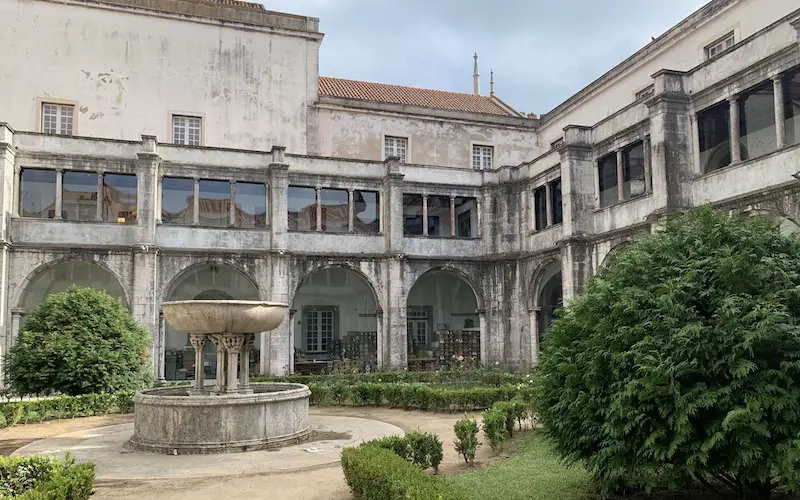
Visiting the Tile Museum Lisbon
I recently spent 3 hours at the Museu Nacional do Azulejo! Here are my top tips if you would like to visit, including how to get there from central Lisbon.
Is it worth visiting the Tile Museum Lisbon?
It is absolutely worth visiting, particularly if you are interested in Church architecture, Portuguese history and the Azulejos.
How do I get to the Lisbon Tile Museum?
In all honesty, most of Lisbon is walkable, but this place is slightly outside of the central area and so you may prefer to take a bus. If you are taking a bus you need to ask for the Rua Madre Deus.
- From Praca Cile in Santa Cruz – 718
- From Cais do Sodre (also goes past Alfama and the Pantheon) – 728
- From Bairro Alto (again also goes past Alfama and the Pantheon) – 759
- From Campolide – 742
How much is it to get in?
It costs €5 per person to visit the Museu Nacional do Azulejo.
There are discounts available for students and senior citizens (over 65).
If you are resident in Portugal you can visit for free on Sundays (take proof of residency with you).
Opening hours are 10am-6pm with last entry at 5.30pm (but the latest I would arrive is 3pm!)
How long do I need to spend at the Museu Nacional do Azulejo?
Don’t underestimate this collection! You will need to allow 2-3 hours to visit the Museu Nacional do Azulejo – it’s not a quick ‘pop in for an hour’ stop off! There is also a cafe with tables in the beautiful garden so you can also grab something to eat there and relax at the end of your visit.
What collections are at the Museum?
The tiles are displayed on three floors with several notable collections to be seen, including a display of Chinese Ming Dynasty tiles from the 16th century and an exhibition of contemporary Portuguese designers.
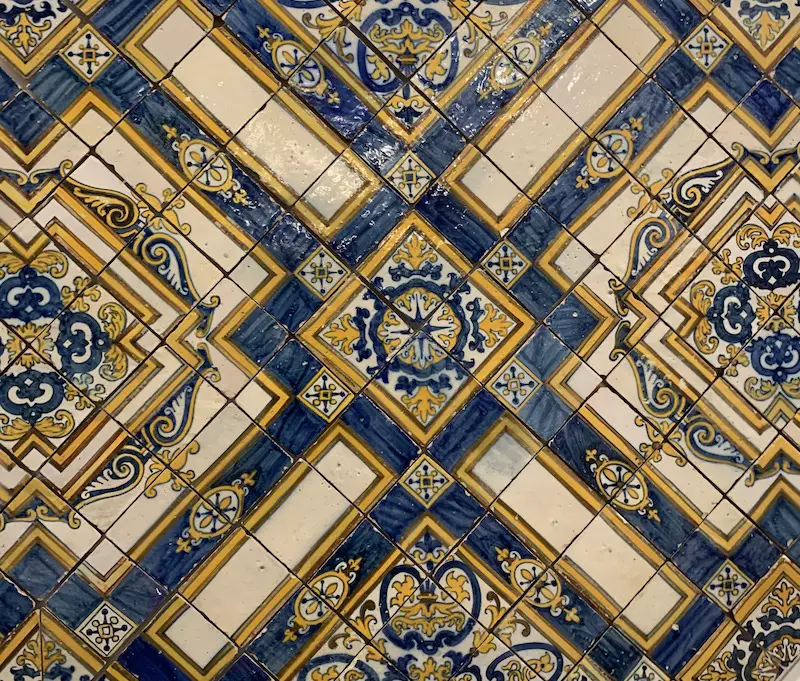
Among the prominent Portuguese painters whose work is represented in the museum are Fernando Namora (1906-1996), Almada Negreiros (1893-1970) and Paula Rego. But one of my favorite collections is a series of tiles by Eduardo Nery, a blind painter who died in 1938 at the age of 39.
Among the notable collections are tiles from a printing workshop established in 1581 by Dom Manuel I, the Portuguese king who later became the first emperor of Brazil. The tiles from this workshop are decorated with intricate designs and have been designated as national treasures.
The history of Portuguese tiles goes back to the Romans, who made them for flooring in public buildings. The tiles in the museum span six centuries and are displayed in a series of cabinets with glass tops that rest on the sloping wood-beam roofs. Each exhibit has an explanatory sheet beside it describing how it was made and its place in history.
A Guide to the Tile Museum Lisbon – the Museu Nacional do Azulejo
The museum is spread across three floors – ground, floor 1 and floor 2. Take your time to explore and don’t miss the Church, small cloisters and Santo Antonia chapel.
Ground floor
The main tile exhibitions on the ground floor are Portuguese and Spanish tiles from 15th through to 17th Centuries. There is a fantastic collection of floor tiles from Valencia (15th Century) and wall tiles from Seville and Toledo (16th Century).
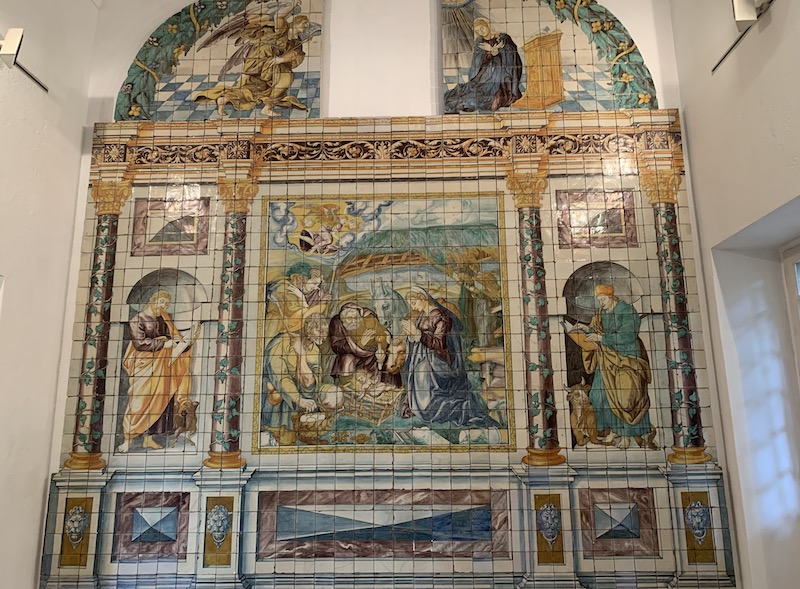
Do not miss the Church of Madre de Deus which which is a beautiful Baroque style and decorated with beautiful Azulejos and gold leaf.
The Baroque style Church was started under King D Joao III but the high altar was consecrated during the reign of Filipe III. It contains Dutch Azulejo panels and Portuguese paintings depicting St Claire and St Francis.
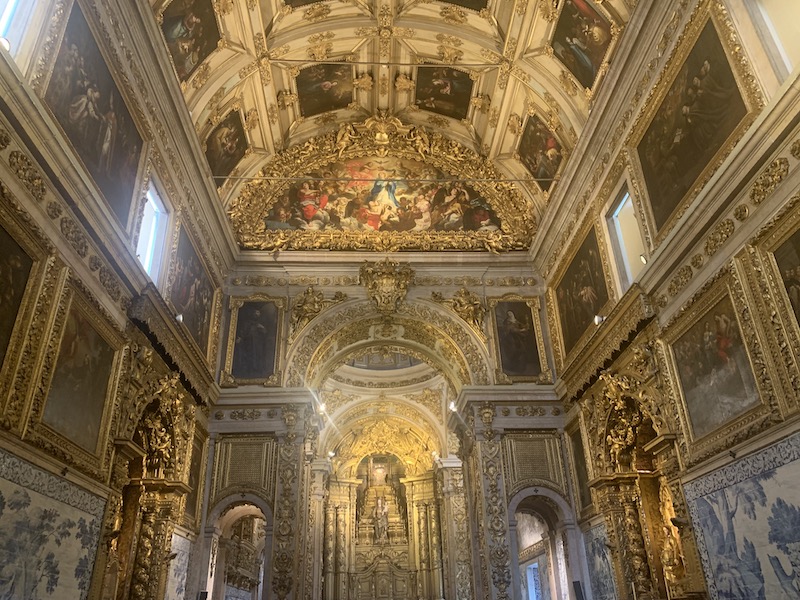
Don’t miss the beautiful blue Azulejos in the D. Manuel room…
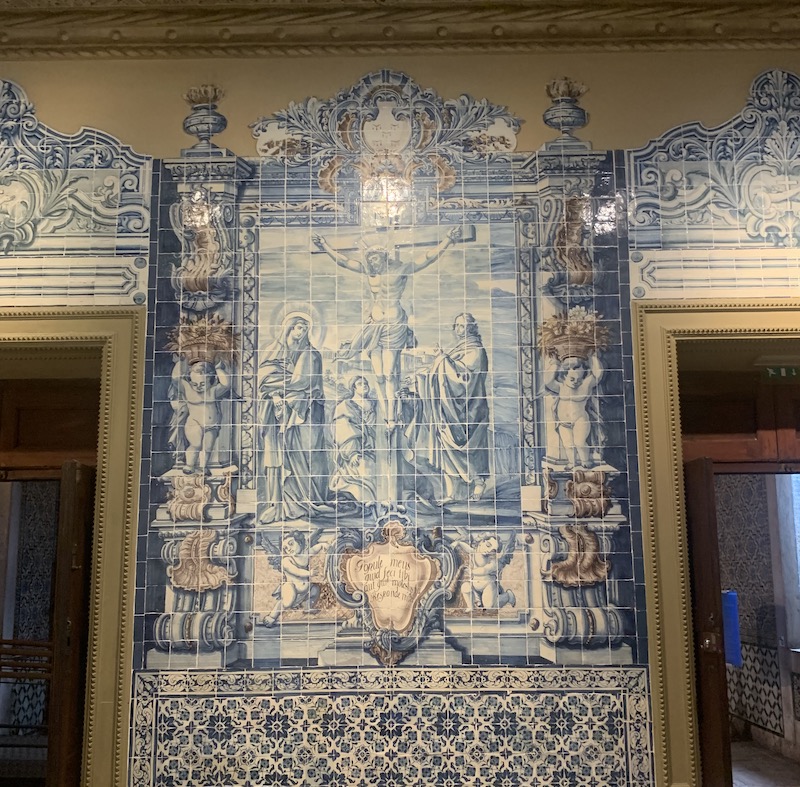
Go up the stairs to the small cloister to admire the architecture of the convent.
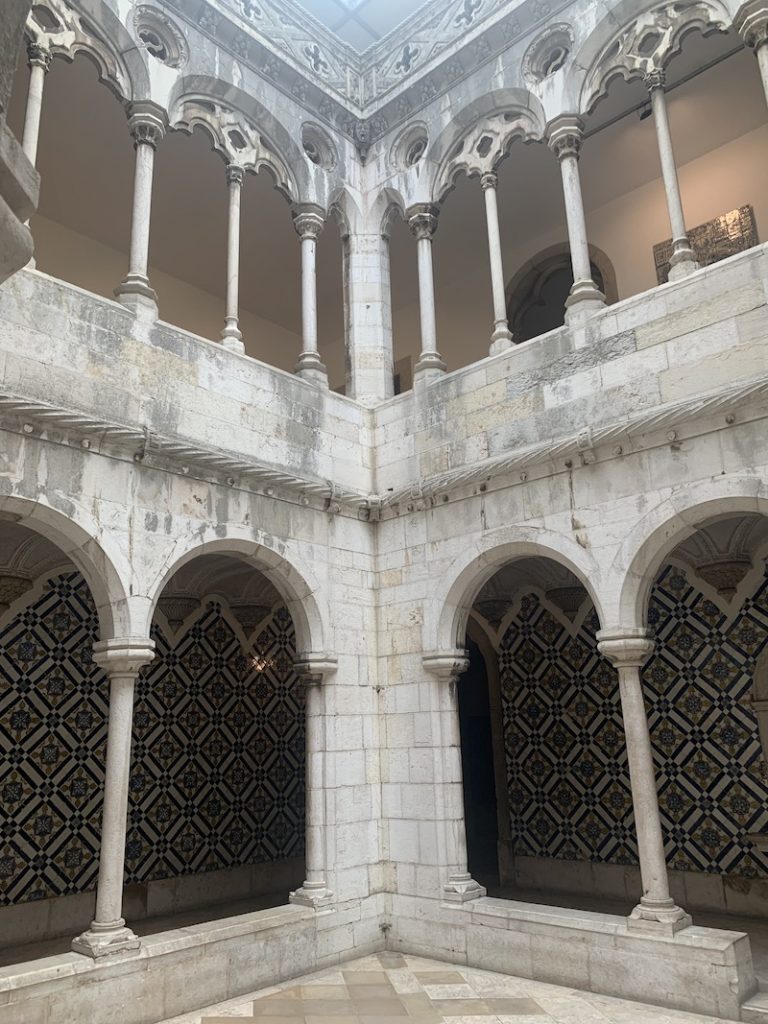
First Floor
As you enter the first floor you will be greeted by a fantastic 20th Century collection of modern ceramics and azulejos art which spans from the Art Deco period to the present day.
The Santo Simoes rooms contains panels from Dutch and other painters from the so called ‘Cycle of the masters’ – blue and white tiles on secular and religious themes.
Another highlight of the first floor is the Sao Bento staircase – these tiles came from the former convent of Sao Bento da Saude in Lisbon.
You can also find a neo-classical Azulejos collection from around 1800 which shows the story of the hatter Antonio Joaquim Carneiro.
But the most impressive part of the first floor is the Santo Antonio chapel, which is so called because of the 27 paintings depicting scenes from the Saint’s life. They were painted by Andre Goncalves and were placed here during the reign of King D. Joao. V. Saint Antonio is considered by many to be the patron Saint of Lisbon.
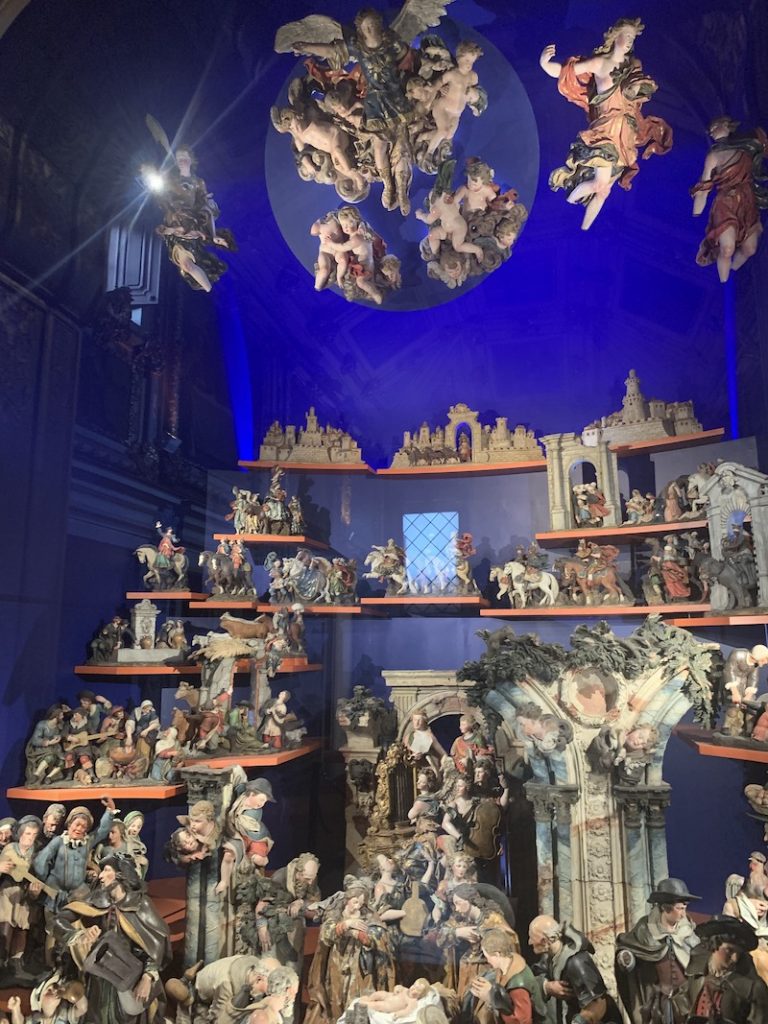
The Santo Antonio chapel also contains a teracotta nativity by Dionisio and Antonio Ferreira. This is considered to be one of the most beautiful manger scenes in Portugal.
Second Floor
Finally you will head up to the third floor to be amazed by a phenomenal blue and white Azulejo scene of Lisbon. You can identify the main sites of the city including the Pantheon, Se Cathedral and Jeronimos Monastery. This 23 metre long Lisbon panorama shows the most complete image of the city before the 1755 earthquake.
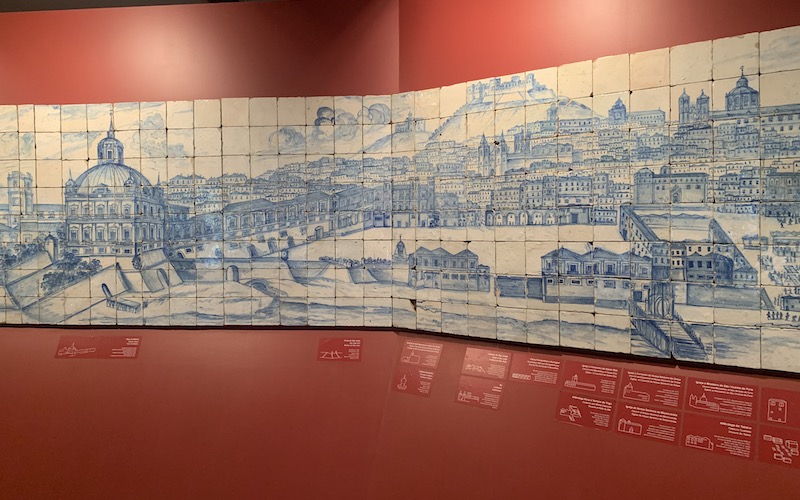
You can also find further Azulejo panels by contemporary artists on the third floor.
At the end of your visit make sure you take some time to enjoy a coffee or even a beer in the beautiful winter garden.
If you enjoyed this article you might also like to read about Best Museums in Lisbon and Christ Statue Lisbon – How to visit Cristo Rei

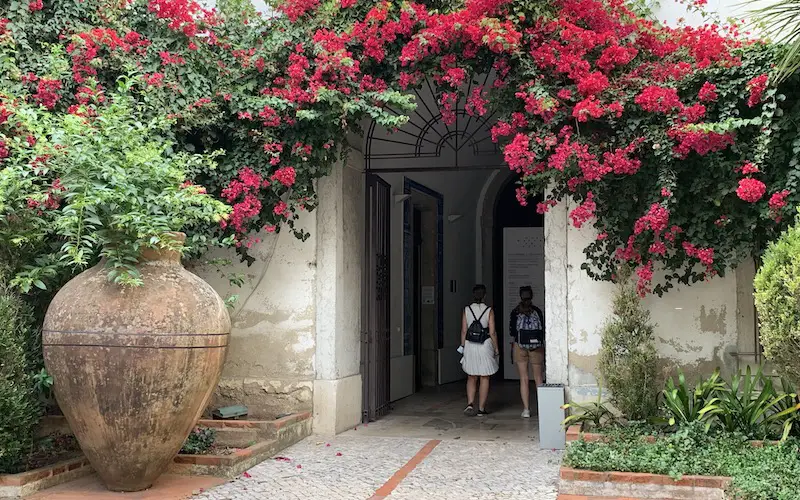

4 thoughts on “Tile Museum Lisbon – Museu Nacional do Azulejo”